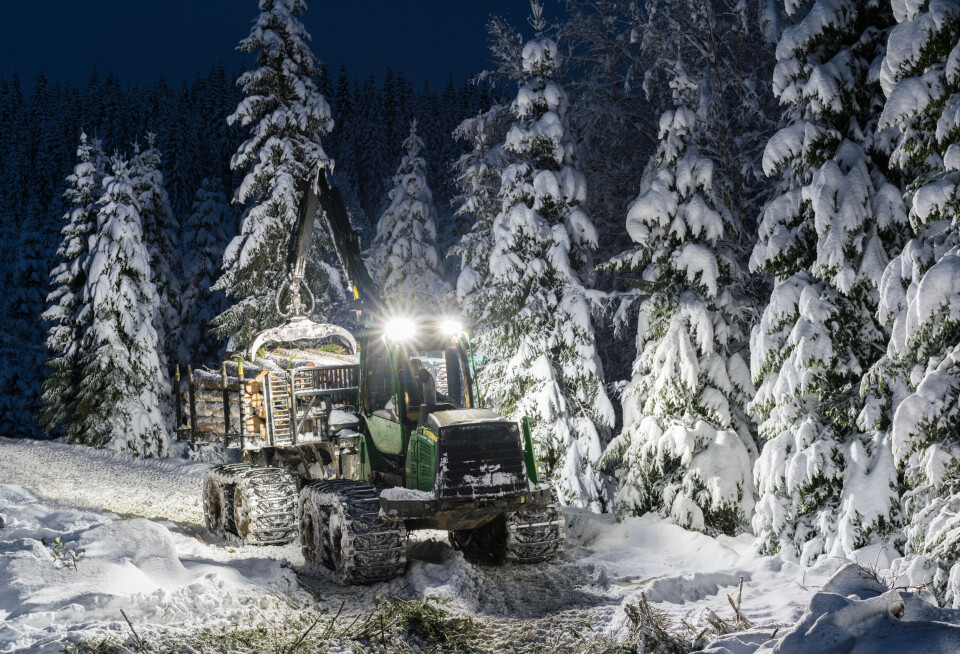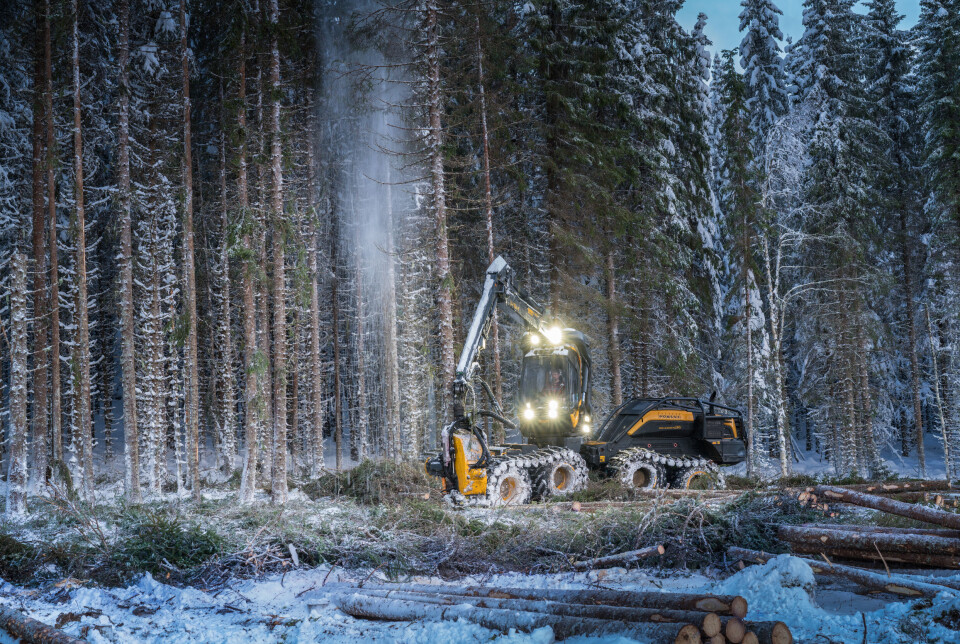THIS CONTENT IS BROUGHT TO YOU BY NIBIO - Norwegian Institute of Bioeconomy Research - read more

Many harvest their forest too early. Why?
Healthy forests that grow well provide the highest timber yield and capture the most carbon when allowed to reach maturity before the final harvest.
It takes 80 to 120 years for a tree to be ready for logging - depending on how quickly the forest grows. Over 25 per cent of the forests in Norway are harvested before reaching maturity class 5. This is the stage of development where the forests are normally considered ready for final harvest.
The extent of such early harvesting is particularly high in forests dominated by Norway spruce trees, which grow the fastest, and along the coast in Western Norway, according to data from Norway’s National Forest Inventory, and the forest authorities’ quality monitoring regime.
“If healthy forests are harvested before reaching maturity, this will result in reduced timber production, and a lower carbon uptake from those areas,” says researcher Helmer Belbo at the Norwegian Institute of Bioeconomy Research (NIBIO).
Not acute financial needs

It is uncommon for forest owners to engage in early harvesting because of acute financial needs or to change the tree species composition of their forests.
“Early final harvests are often motivated by forest health problems, changes in land use, and neighbours harvesting. The latter is simply that the forest owner gets the felling done because the logging team is available in that area,” Belbo says.
To investigate the motives behind why forest owners still choose to harvest their forests earlier than what is considered optimal, Belbo and his colleague at NIBIO, Aksel Granhus, contacted forest owners, forest managers, and timber buyers from all over Norway.
In total, 1,254 forest owners, 112 timber buyers, and 146 forestry managers participated in the survey.
The results show that 28 per cent of the final felling area was in maturity class 3 or 4, while 72 percent were in maturity class 5.
The forest is divided into classes for harvesting. They describe the different developmental stages from when the small sprouts are planted, in class 1, and further through adolescence, as small plants, to mature forest, and to where the growth significantly decreases in maturity class 5.
Timber buyers and forest managers, on their side, estimated that 24 and 32 per cent of the timber volume in their respective areas was cut in forests younger than maturity class 5.
Some wanted to reassign the forest area to agriculture
The percentage of forest owners wanting to reassign all, or parts, of their harvested area for agricultural purposes, was 6 per cent in Eastern Norway, 12 per cent in Southern Norway, and 19-24 per cent in Western Norway and northward.
Belbo states that in as many as half of the cases of early harvesting in Trøndelag and Northern Norway, the motive was reassignment. In the rest of the country, there was little difference between early and regular harvesting times.
The forest managers indicated that as much as 45 per cent of the harvested forest area in maturity class 3, and 20 per cent of the harvested forest area in maturity class 4, are reassigned – primarily for agricultural purposes.

Timber price is crucial
There was also a clear difference in the justification for logging between those who exclusively felled forests in maturity class 5 and those who also felled younger forests in the same logging operation.
“In the first group, good operational conditions, timber prices, and the fact that the forest was due for felling in their forest management plan, were the most important motivations for harvesting,” says Belbo.
For those forest owners who had harvested their forest at an earlier stage, the recommendations in the forest plan were less emphasised. The same applied for operational conditions and, to some extent, timber prices.
Additionally, very few forest owners mentioned a desire to change tree species composition, or acute financial needs, as a motive for harvesting.
Consult the timber buyers for advice
More than half of the forest owners surveyed had consulted with others prior to the decision to harvest. The group most frequently consulted was the timber buyers, as also indicated by the responses from municipal forest managers.
However, timber buyers themselves downplay their role and importance in the forest owner's decision to harvest or not.
Belbo mentions that forest owners, often motivated by either forest health challenges or the desire to make wise financial decisions, can benefit from quality forestry guidance, which in turn leads to better decision-making.

Loss calculator is available
The timing of harvesting has significant consequences for both the forest owner’s economy, national timber production, and carbon capture. The forestry extension service Skogkurs has therefore developed a guide: Early Harvest – Consequences of Choosing Logging Age.
They have also developed a separate calculator that helps the forest owner estimate how much they lose by harvesting the stand 5-20 years before the normal maturity age.
“The loss calculator is a valuable tool, both for forest owners and forest managers, when it comes to assessing the economic consequences of different harvesting times,” says Belbo.
A challenge for both forest owners and their advisers is that the loss calculator assumes that the forest follows normal development.
“However, there are no decision support tools to rely on in order to assess whether forest health challenges in standing forests younger than maturity class 5 justify early logging or not,” Belbo says.
In other words, the forest owner is then at the mercy of their own or their adviser's judgment in determining whether the forest should be harvested or allowed to continue growing.
“Even though the adviser has significant training and expertise, such assessments are often quite challenging. Better tools will most likely provide a better basis for determining whether an early harvest is a good management measure or not in cases where early harvests are done,” Belbo concludes.
Reference:
Belbo, H. & Granhus, A. Årsaker til tidlig hogst: Undersøkelser rettet mot skogeiere, virkeskjøpere og kommunal skogbruksmyndighet (Reasons for early harvesting: Surveys directed at forest owners, timber purchasers, and municipal forestry authotrities, NIBIO report 9:149, 2023.

This content is paid for and presented by NIBIO - Norwegian Institute of Bioeconomy Research
This content is created by NIBIO's communication staff, who use this platform to communicate science and share results from research with the public. NIBIO is one of more than 80 owners of ScienceNorway.no. Read more here.
More content from NIBIO:
-
This colourful bird is thriving in Norway
-
Can drone-mounted tree planting replace manual tree planting?
-
Light traps can tell us more about nocturnal moths
-
Climate change and land use threaten Sámi reindeer husbandry
-
Researchers are now going to monitor carbon in forest and grassland soils
-
Nine facts about Norwegian agriculture




































